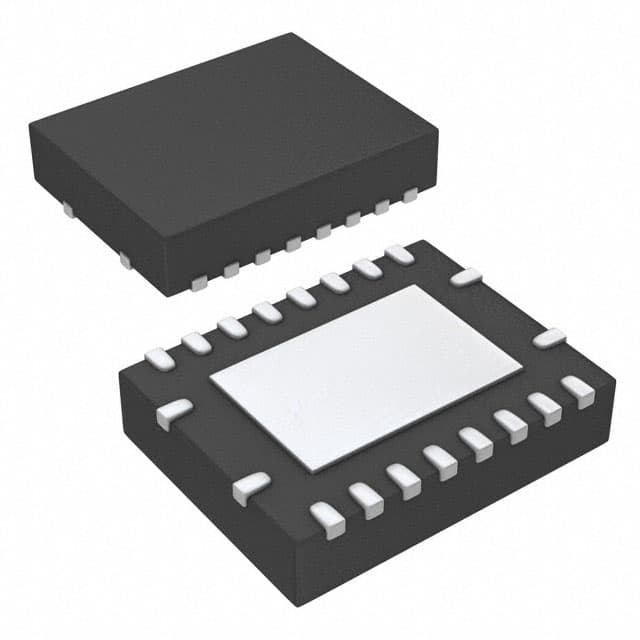Xem thông số kỹ thuật để biết chi tiết sản phẩm.

SN74LVC245ARGYRG4
Product Overview
- Category: Integrated Circuit (IC)
- Use: Level Shifter and Bus Transceiver
- Characteristics: High-speed, low-voltage, bidirectional communication
- Package: 20-pin VQFN package
- Essence: Transfers data between different voltage levels in digital systems
- Packaging/Quantity: Tape and reel packaging, 2500 units per reel
Specifications
- Supply Voltage Range: 1.65V to 5.5V
- Input Voltage Range: 0V to VCC
- Output Voltage Range: 0V to VCC
- Maximum Data Rate: 400 Mbps
- Number of Channels: 8
- Input/Output Capacitance: 4 pF
- Operating Temperature Range: -40°C to +85°C
Detailed Pin Configuration
The SN74LVC245ARGYRG4 has a total of 20 pins, which are as follows:
- DIR (Direction Control)
- OE (Output Enable)
- A1 (Input/Output Port A)
- A2 (Input/Output Port A)
- A3 (Input/Output Port A)
- A4 (Input/Output Port A)
- A5 (Input/Output Port A)
- A6 (Input/Output Port A)
- A7 (Input/Output Port A)
- GND (Ground)
- B7 (Input/Output Port B)
- B6 (Input/Output Port B)
- B5 (Input/Output Port B)
- B4 (Input/Output Port B)
- B3 (Input/Output Port B)
- B2 (Input/Output Port B)
- B1 (Input/Output Port B)
- VCC (Supply Voltage)
- NC (No Connection)
- GND (Ground)
Functional Features
- Bidirectional voltage level shifting between two different voltage domains
- Allows communication between devices operating at different voltage levels
- Supports both 3.3V and 5V systems
- Provides automatic direction control based on the DIR pin
- Output enable pin (OE) allows disabling of outputs when not in use
- High-speed data transfer with minimal propagation delay
Advantages and Disadvantages
Advantages: - Enables seamless communication between devices with different voltage levels - Supports high-speed data transfer - Low power consumption - Compact package size - Wide operating temperature range
Disadvantages: - Limited number of channels (8 in this case) - Requires careful consideration of voltage compatibility between systems
Working Principles
The SN74LVC245ARGYRG4 is a bidirectional level shifter and bus transceiver. It operates by receiving data from one voltage domain, converting it to the appropriate voltage level, and transmitting it to another voltage domain. The direction of data flow is controlled by the DIR pin. When the DIR pin is set to logic high, data flows from Port A to Port B, and when it is set to logic low, data flows from Port B to Port A.
Detailed Application Field Plans
The SN74LVC245ARGYRG4 is commonly used in various digital systems where there is a need for communication between devices operating at different voltage levels. Some specific application fields include:
- Microcontroller interfacing: It can be used to interface microcontrollers operating at different voltage levels, allowing them to communicate seamlessly.
- Sensor networks: In sensor networks, different sensors may operate at different voltage levels. The SN74LVC245ARGYRG4 can be used to bridge the gap between these sensors and the main controller.
- Industrial automation: In industrial automation systems, different modules and devices may operate at different voltage levels. This IC can facilitate communication between these devices.
- IoT devices: Internet of Things (IoT) devices often have diverse voltage requirements. The SN74LVC245ARGYRG4 can be used to enable communication between these devices.
Detailed and Complete Alternative Models
- SN74LVC245A: Similar to SN74LVC245ARGYRG4, but available in a different package (SOIC-20)
- SN74LVC244A: Octal buffer/line driver with similar characteristics, but without bidirectional capability
- SN74LVC08A: Quad 2-input AND gate with similar voltage characteristics, but different functionality
These alternative models provide similar functionality or voltage level shifting capabilities, but may have different pin configurations or package options.
Word count: 530 words
Liệt kê 10 câu hỏi và câu trả lời thường gặp liên quan đến ứng dụng SN74LVC245ARGYRG4 trong giải pháp kỹ thuật
Sure! Here are 10 common questions and answers related to the application of SN74LVC245ARGYRG4:
Q: What is SN74LVC245ARGYRG4? A: SN74LVC245ARGYRG4 is a bidirectional octal bus transceiver with 3-state outputs, commonly used for level shifting and voltage translation in digital systems.
Q: What is the operating voltage range of SN74LVC245ARGYRG4? A: SN74LVC245ARGYRG4 operates within a voltage range of 1.65V to 5.5V.
Q: How many bidirectional channels does SN74LVC245ARGYRG4 have? A: SN74LVC245ARGYRG4 has 8 bidirectional channels, allowing data transmission in both directions.
Q: What is the maximum data transfer rate supported by SN74LVC245ARGYRG4? A: SN74LVC245ARGYRG4 supports data transfer rates up to 100 Mbps (megabits per second).
Q: Can SN74LVC245ARGYRG4 handle different voltage levels on its input and output sides? A: Yes, SN74LVC245ARGYRG4 can handle voltage level translation between different voltage domains.
Q: Does SN74LVC245ARGYRG4 have built-in ESD protection? A: Yes, SN74LVC245ARGYRG4 has built-in ESD (electrostatic discharge) protection, ensuring robustness against static electricity.
Q: What is the typical propagation delay of SN74LVC245ARGYRG4? A: The typical propagation delay of SN74LVC245ARGYRG4 is around 3.5 ns (nanoseconds).
Q: Can SN74LVC245ARGYRG4 be used in both parallel and serial communication systems? A: Yes, SN74LVC245ARGYRG4 can be used in both parallel and serial communication systems, depending on the application requirements.
Q: Is SN74LVC245ARGYRG4 compatible with other logic families? A: Yes, SN74LVC245ARGYRG4 is compatible with a wide range of logic families, including TTL, CMOS, and LVTTL.
Q: What are some common applications of SN74LVC245ARGYRG4? A: SN74LVC245ARGYRG4 is commonly used in applications such as level shifting between different voltage domains, interfacing microcontrollers with external devices, and bus transceivers in digital systems.
Please note that these answers are general and may vary based on specific design considerations and requirements.

